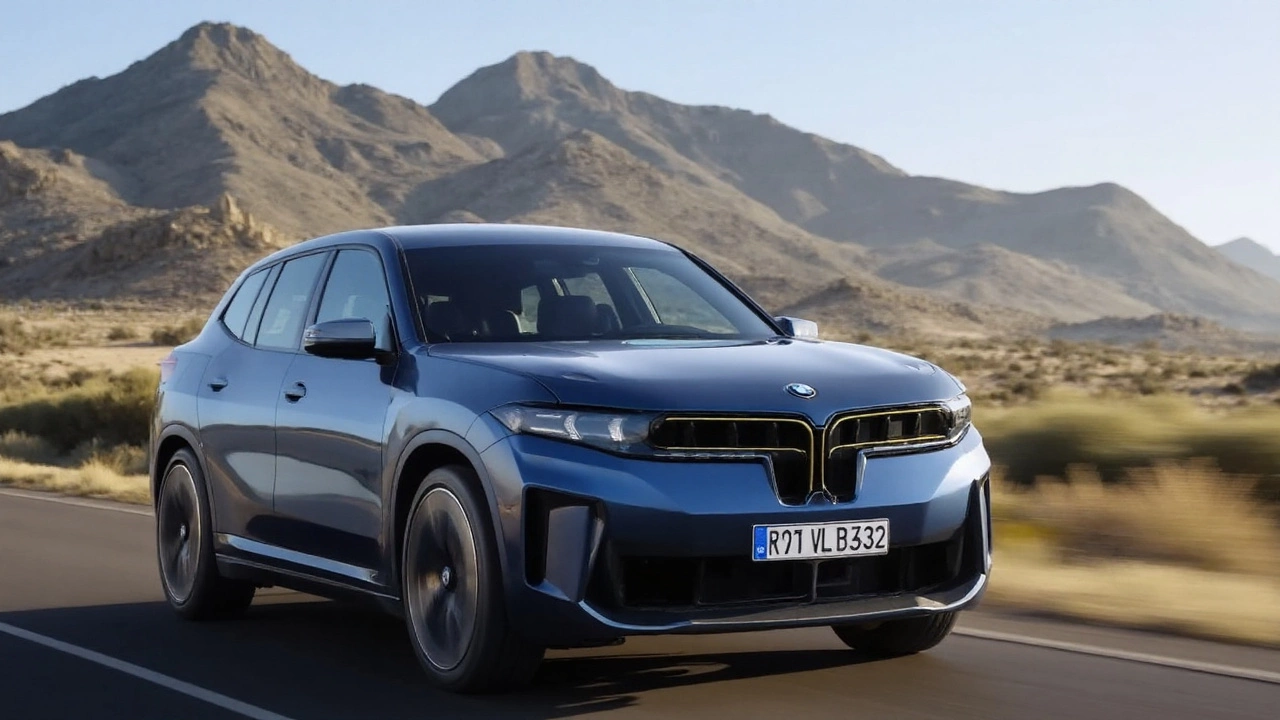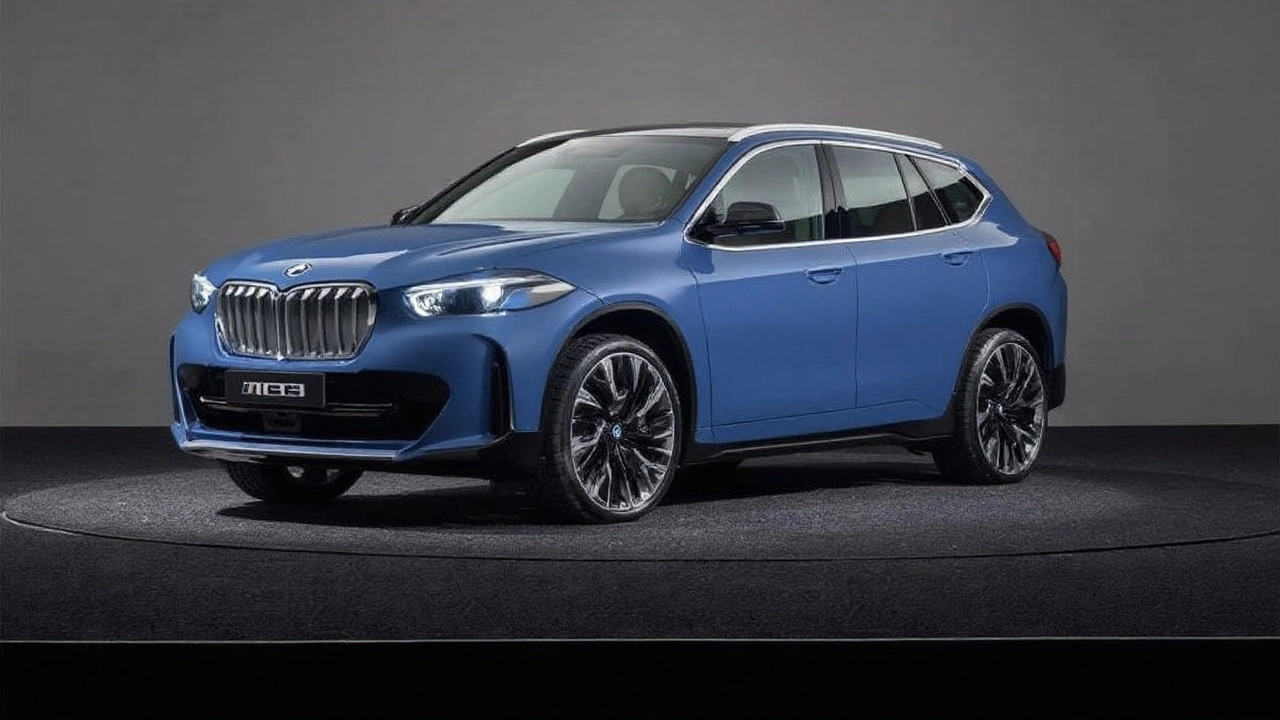A new electric playbook for BMW’s core SUV
BMW’s next chapter isn’t a concept car or a limited run halo. It’s a family SUV. The BMW iX3 2026 is the first series model on the brand’s Neue Klasse platform, and it arrives with numbers designed to reset expectations: a claimed WLTP range as high as 500 miles, ultra‑fast 400 kW DC charging, and packaging that finally gives this nameplate a frunk and serious towing muscle.
The powertrain is a dual‑motor setup: an electrically excited synchronous motor at the rear and a new asynchronous motor up front. Combined output stands at 463 hp and 645 Nm (475 lb‑ft). On paper, that’s good for 0–62 mph in 4.9 seconds and a top speed of 130 mph (210 km/h). The choice of motor types is deliberate. The rear unit delivers strong, consistent drive without using permanent magnets, while the front asynchronous motor can spin with almost no drag when not engaged, helping efficiency in cruising.
The battery is BMW’s sixth‑generation lithium‑ion pack using new cylindrical NMC cells. Usable capacity is 108.7 kWh, and BMW says the cells store 20% more energy and charge 30% faster than before. On the WLTP cycle, the iX3 is quoted between 421 and 500 miles depending on spec. Real‑world range will vary by climate, wheel size, and speed, and U.S. EPA ratings typically land lower than WLTP; even so, the headline number puts the iX3 among the longest‑range electric SUVs on sale globally.
Charging is the other shock factor. The 800‑volt architecture allows a peak of up to 400 kW at compatible stations. In ideal conditions, BMW says you could add more than 200 miles in about 10 minutes. Most public hardware today tops out at 350 kW; even there, the car is engineered to take a high rate long enough to deliver a 200‑mile top‑up in under 15 minutes. The big caveat, as always, is temperature and station health. But the hardware ceiling is future‑proof by today’s standards.
Want the quick hits? Here are the headline numbers BMW has released so far:
- Power and torque: 463 hp, 645 Nm (475 lb‑ft)
- 0–62 mph: 4.9 seconds; top speed: 130 mph (210 km/h)
- Battery: 108.7 kWh usable, sixth‑gen cylindrical NMC cells
- Range (WLTP): 421–500 miles
- DC charging: up to 400 kW on 800‑volt system
- Dimensions (L/W/H): 4,782/1,895/1,635 mm
- Wheelbase: 2,897 mm
- Cargo: 520 L (up to 1,750 L with seats folded) + 58 L frunk
- Towing capacity: 2,000 kg (4,410 lbs)
- Weight: 2,285–2,360 kg (5,038–5,203 lbs)
Those packaging figures matter. Compared with the outgoing iX3, this one grows modestly in length and wheelbase but frees up a lot more useful space. The rear load area is square and deep, the back seats fold flat for 1,750 liters of room, and—finally for this nameplate—there’s a 58‑liter frunk for charge cables and muddy gear. Roof‑rack capability stays, and a 2,000‑kg tow rating means a medium trailer or a small boat is in play for weekend duty.
Design follows the Neue Klasse playbook we’ve seen in concepts but toned down for production. It’s a clean two‑box shape with a slightly sloped roof and strong shoulder lines. Up front, the kidney graphic goes vertical and trades chrome for light. Diagonal DRLs frame the face and widen the stance visually. The surfacing reads purposeful rather than shouty, which should age well as BMW rolls this look across the next wave of models.
Under the skin, the platform changes are bigger than the styling. The pack is integrated into the body structure instead of sitting as a separate box. That saves height, reduces mass, and stiffens the whole shell. The benefit is twofold: more cabin space for a given footprint and better ride-and‑handling tuning because the structure flexes less. Pack‑to‑body also helps NVH, so fewer shimmies over rough patches and less boom from the rear.
BMW’s motor strategy is just as telling. Electrically excited synchronous machines avoid rare‑earth magnets, which helps on cost and supply, and they maintain output at higher speeds. The asynchronous front unit is there for traction and bursts of power. When you’re cruising, it can be electrically “idled,” which cuts drag losses. Combined with software that shuffles torque predictively rather than reactively, it’s a recipe for lower consumption without dulling the step‑off punch drivers expect in a premium EV.
As for performance feel, the numbers suggest a quick but not extreme SUV. Think brisk passes and a confident launch, not launch‑control theatrics. Given the mass—just over 2.3 tons—it will lean on brake‑by‑wire blending and aggressive regen to recover energy in stop‑and‑go. Expect multiple regen profiles, including a strong “one‑pedal” mode for city use, and a coasting mode on highways to take advantage of the front motor’s low drag.

Range, charging, space, and the bigger market picture
Let’s talk about that range claim. The WLTP figure up to 500 miles sets a marker in the midsize SUV class. Translated to EPA, many European EVs drop 10–20% depending on aerodynamics, tire spec, and testing strategy. Even if the iX3 lands around the low‑to‑mid‑400s on EPA, that’s still a strong result for a vehicle with this footprint and capability. It also buys headroom for winter driving and high‑speed runs, where consumption typically spikes.
The charging story is as much about curve as it is about peak. Hitting 400 kW for a few seconds doesn’t help if the car tapers quickly. BMW’s sixth‑gen hardware and cell chemistry are designed to hold a higher rate longer. Cylindrical cells help thermal control, and an 800‑volt backbone keeps current (and therefore heat) down for the same power. The result should be less time stuck at a charger—assuming the station can deliver and the battery is preconditioned on the way in.
Public networks are catching up, but 400 kW plugs are still rare. The good news for future owners is compatibility. With the 800‑volt system, the iX3 can take advantage of high‑power units where available and still fast charge efficiently on 350 kW posts that are more common. In North America, BMW has said it will adopt the NACS connector, opening access to a wider pool of DC stations as adapters and native ports roll out from 2025 onward. That should ease road‑trip anxiety far more than any single “peak kW” number.
On size and space, the iX3 now feels like it belongs a half‑step up. The 2,897 mm wheelbase stretches legroom, and the low floor made possible by the integrated pack keeps seating natural rather than knees‑up. Families will notice the flat cargo floor and a lip that’s low enough for bulky items. The 58‑liter frunk isn’t massive, but it’s perfect for cables, a portable charger, and a toolkit, which keeps the main trunk clean.
Towing at 2,000 kg is meaningful. That covers a small camper, a pair of jet skis, or a lightweight track car on an aluminum trailer. Range will drop with a trailer, of course, but the 800‑volt system and strong charging rates help make towing days manageable with fewer and shorter stops.
Ride and handling will be a key test for the Neue Klasse chassis. The stiffer body shell lets engineers fit softer springs without losing control, or keep things taut without adding harshness. Expect adaptive dampers, a fast steering rack, and clever torque vectoring via the dual motors. If BMW can deliver the trademark “calm at 80 mph, eager at 30 mph” balance, this platform will underpin a lot more than one SUV.
Where the iX3 sits in the market is interesting. Size‑wise, it targets the heart of the premium midsize EV class. Think Tesla Model Y, Mercedes‑Benz EQE SUV, Audi Q6 e‑tron, and Porsche Macan Electric on price and footprint. The claimed range headline leapfrogs several of those, at least on WLTP. Performance is competitive rather than silly, which fits the mission of a mainstream family SUV rather than a niche performance variant.
Interior tech hasn’t been fully detailed here, but Neue Klasse previews point to a cleaner cabin, fewer physical buttons, and a new interface that leans on a wide head‑up projection and voice control. Expect fast over‑the‑air updates and a more efficient electronics backbone. The important part for buyers is responsiveness: that the car boots fast, recognizes commands, and routes you to chargers that actually work.
Design cues tie this car to a new brand era. The vertical kidney graphic, diagonal DRLs, and lighting that replaces chrome are meant to be signatures you’ll see echoed on future sedans and crossovers. The surfaces are simpler and bolder than recent BMWs, which also serves aerodynamics. Clean front corners, sealed grilles, and tight panel gaps help reduce drag and wind noise—a big deal when you’re chasing long‑range efficiency.
There’s a sustainability story under the skin. Electrically excited motors cut reliance on rare‑earth materials. Integrating the pack saves raw material by folding structural functions together. Cylindrical cells can be built with higher yield and are easier to cool, which extends life. BMW has also been vocal about using more recycled content in the shell and interior. We’ll need final spec sheets to see percentages, but the direction is clear.
Weight is the reality check for every EV. At roughly 2.3 tons, the iX3 is no featherweight, yet that’s competitive in the class given battery size and feature content. The payoff shows up on the highway: long legs at 75 mph and stable crosswind behavior. In town, software‑tuned regen does the heavy lifting to mask mass, while low‑speed calibration of the front motor keeps tip‑in smooth rather than jerky.
Practical details round it out. Roof rails support pods and bike racks. The rear opening is wide, and the seatbacks fold in a 40:20:40 split so skis can run down the middle with four passengers onboard. The charge port placement should make both curbside and pull‑through DC stations workable—something older EVs often bungled. Cabin storage will matter too; the frunk helps, but big door bins and a deep center console make or break family duty.
As for price and timing, BMW hasn’t published figures here. Expect a staggered launch by region with Europe first, given the WLTP numbers and the company’s production cadence for Neue Klasse. Pricing will depend heavily on battery spec and standard equipment. Rivals in this space stretch from the upper $50,000s to the $80,000s before options in the U.S., and well into the €60,000–€90,000 band in Europe. Where BMW lands will tell us how aggressively it wants to chase volume.
The strategic angle is simple: this SUV is the template. Neue Klasse is not a one‑off architecture; it’s BMW’s mainline for the next decade. If the iX3 nails efficiency, charging performance, and daily‑use packaging, it gives BMW a strong base for everything from compact crossovers to sport sedans. If it stumbles, the fix‑it list becomes long and public. The early spec sheet suggests Munich knows what matters to EV buyers in 2026: range that holds up in winter, fast charging that works in the real world, and a cabin that makes life simple—not just flashy.
We’ll get the full picture once BMW confirms trim breakdowns, EPA ratings, cabin tech specifics, and market rollout. For now, the numbers and the new platform signal a clear reset for one of BMW’s most important models—and a shot across the bow for every premium brand in the midsize electric SUV race.

